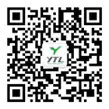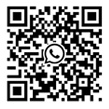I. Introduction to Energy Meters
1.1 What is an Energy Meter?
An energy meter, often called an electricity meter or kilowatt-hour (kWh) meter, is a device that measures the amount of electrical energy consumed by a residence, business, or an electrical appliance. It quantifies the electrical power used over a period, allowing utility companies to bill consumers accurately for their electricity usage. Essentially, it's the financial interface between the power grid and the end-user.
1.2 Why are Energy Meters Important?
Energy meters are indispensable for several reasons:
- Accurate Billing: They provide precise data on electricity consumption, ensuring that consumers are charged fairly for the energy they use.
- Energy Management: For consumers, understanding their energy usage helps them identify areas where they can reduce consumption and save money. For utilities, aggregated data from meters helps them manage demand and optimize grid operations.
- Grid Stability: By monitoring energy flow, utility companies can maintain a stable and reliable power supply, preventing outages and managing peak demand.
- Environmental Impact: By promoting energy awareness and efficiency, meters indirectly contribute to reduced energy consumption, which can lead to a smaller carbon footprint.
- Innovation: Modern smart meters enable advanced functionalities like real-time monitoring, demand-side management, and integration with renewable energy sources, driving innovation in the energy sector.
1.3 Brief History of Energy Meters
The evolution of energy meters mirrors the advancement of electrical distribution itself.
- Early Days (Late 19th Century): The first commercial electricity meters were direct current (DC) meters. Thomas Edison introduced his chemical ampere-hour meter in 1881, which measured electricity by plating zinc onto electrodes immersed in an electrolyte. These were cumbersome and required manual reading and chemical analysis.
- Alternating Current (AC) Dominance (Late 19th - Early 20th Century): With the rise of alternating current (AC) as the preferred method for power distribution, new metering technologies emerged. Oliver B. Shallenberger invented the first AC watt-hour meter in 1888, based on the principle of electromagnetic induction. This led to the widespread adoption of the electromechanical induction meter, characterized by its spinning aluminum disc.
- Electronic Revolution (Late 20th Century): The advent of solid-state electronics in the latter half of the 20th century brought about electronic energy meters. These meters use digital technology to measure energy, offering greater accuracy, smaller size, and enhanced features compared to their mechanical predecessors. They often include LCD displays and can store more data.
- The Smart Meter Era (21st Century): The most significant recent development is the smart meter. These advanced electronic meters incorporate two-way communication technology, allowing for automatic and remote meter readings, real-time consumption data, and integration with smart grids. Smart meters are foundational to modern energy management and the development of more efficient and resilient power systems.
The progression from simple mechanical devices to sophisticated smart meters highlights a continuous drive towards more accurate, efficient, and interactive energy monitoring.
II. Types of Energy Meters
The world of energy metering has evolved significantly, leading to various types of meters, each with its own technology and features. Understanding these distinctions is crucial for appreciating how your electricity consumption is measured.
2.1 Electromechanical Induction Meters
These are the traditional, older generation of electricity meters, easily recognizable by their spinning aluminum disc. They operate on the principle of electromagnetic induction. When current flows through the meter's coils, it creates magnetic fields that induce eddy currents in the aluminum disc. The interaction between these magnetic fields and eddy currents causes the disc to rotate. The speed of rotation is directly proportional to the amount of power being consumed. Gears connected to the disc then drive a series of dials, displaying the cumulative energy consumption in kilowatt-hours (kWh).
Key characteristics:
- Analog display: Readings are taken from mechanical dials.
- No electronic components (in the measurement part): Relies purely on physical principles.
- Prone to wear and tear: Moving parts can degrade over time, affecting accuracy.
- One-way communication: Only records consumption; no data transmission capabilities.
- Susceptible to tampering: Older designs can be easier to manipulate.
2.2 Electronic Energy Meters
Also known as digital meters, these represent a significant leap forward from their electromechanical predecessors. Instead of a spinning disc, electronic energy meters use solid-state electronic components to measure voltage and current. They sample the voltage and current signals, convert them into digital data, and then use a microcontroller to calculate the power consumption. The readings are typically displayed on an LCD or LED screen.
Key characteristics:
- Digital display: Clear, easy-to-read numeric output.
- Higher accuracy: Generally more precise than induction meters due to digital processing.
- No moving parts: More durable and less prone to mechanical failure or wear.
- Enhanced features: Can often store historical consumption data, display instantaneous load, and detect tampering attempts.
- Basic communication (optional): Some models may have a port for manual data extraction or limited one-way communication.
2.3 Smart Meters (AMI)
Smart meters are the cutting-edge of energy metering technology, forming the backbone of the Advanced Metering Infrastructure (AMI). While they are a type of electronic meter, their defining feature is their two-way communication capability. Unlike traditional meters that only record consumption, smart meters can send data back to the utility company automatically and receive information, commands, and software updates from the utility.
Key characteristics:
- Real-time data: Provides granular, near-instantaneous consumption information to both the utility and the consumer.
- Two-way communication: Enables remote meter reading, remote connect/disconnect services, and demand response programs.
- Remote management: Utilities can manage meters and grid operations without needing to send personnel to the site.
- Integration with smart grids: Facilitate efficient energy distribution, fault detection, and integration of renewable energy sources.
- Enhanced consumer engagement: Allows consumers to monitor their usage via online portals or in-home displays, promoting energy saving.
- Advanced security features: Incorporate encryption and other measures to protect data integrity and privacy.
2.4 Comparison Table: Key Differences
Here's a concise comparison of the three main types of energy meters:
| Feature | Electromechanical Induction Meter | Electronic Energy Meter | Smart Meter (AMI) |
|---|---|---|---|
| Measurement Method | Mechanical (spinning disc) | Electronic (solid-state) | Electronic (solid-state) |
| Display Type | Analog (dials) | Digital (LCD/LED) | Digital (LCD/LED) |
| Moving Parts | Yes | No | No |
| Accuracy | Good, but can degrade | Very Good | Excellent |
| Data Recording | Cumulative (manual reading) | Cumulative, some historical | Granular, real-time, historical |
| Communication | None (visual reading only) | Limited (e.g., optical port) | Two-way (wireless/wired) |
| Remote Reading | No | No | Yes |
| Real-time Data | No | Limited | Yes |
| Integration with Grid | No | Limited | Extensive (Smart Grid) |
| Tamper Resistance | Low | Medium | High |
| Common Use | Older installations | Residential, commercial | Modern residential, commercial, industrial |
III. How Energy Meters Work
At its core, an energy meter's job is to accurately measure the electrical power consumed over time. This section breaks down the fundamental principles behind how these crucial devices operate.
3.1 Basic Components of an Energy Meter
While the complexity varies between electromechanical, electronic, and smart meters, all energy meters share some core functional components that enable them to measure electricity usage:
- Voltage Circuit (Potential Coils): This part of the meter is connected in parallel across the electrical supply. It's designed to measure the incoming voltage of the power supply.
- Current Circuit (Current Coils): Connected in series with the electrical load, this circuit measures the current flowing through the circuit to the consumer's premises.
- Measurement Mechanism: This is where the actual "work" of measuring occurs.
- For electromechanical meters: This involves the aluminum disc, braking magnet, and a system of gears that convert the disc's rotation into a reading.
- For electronic and smart meters: This consists of highly accurate electronic sensors (like current transformers and voltage dividers) that sample the instantaneous voltage and current signals, along with an Analog-to-Digital Converter (ADC) to turn these analog signals into digital data.
- Processing Unit:
- For electromechanical meters: The mechanical gears act as the basic "processor" to sum up rotations.
- For electronic and smart meters: A microcontroller or Digital Signal Processor (DSP) rapidly processes the digital voltage and current data to calculate power and integrate it over time to determine energy consumption.
- Display: This is how the meter communicates the consumption data to the user or meter reader.
- Electromechanical meters: Feature mechanical dials.
- Electronic and smart meters: Use an LCD (Liquid Crystal Display) or LED (Light Emitting Diode) screen.
- Communication Module (Smart Meters only): This essential component in smart meters allows for two-way data exchange with the utility company. It typically uses technologies like cellular, Wi-Fi, Zigbee, or power line communication (PLC).
3.2 Measuring Voltage and Current
The foundation of energy measurement lies in accurately determining the voltage and current in an electrical circuit.
- Voltage Measurement: The voltage circuit in the meter is connected in parallel with the main power lines. It essentially "senses" the electrical potential difference supplied to the premises. Modern electronic meters use precise voltage dividers or potential transformers to step down the voltage to a measurable level for their internal circuitry.
- Current Measurement: The current circuit is connected in series, meaning all the electricity consumed flows through it. This allows the meter to measure the amount of electrical charge (current) passing through. Electronic meters often use current transformers (CTs) or shunt resistors to safely and accurately measure the current without disrupting the main power flow. CTs induce a smaller, proportional current in a secondary coil, while shunt resistors create a small voltage drop proportional to the current, which can then be measured.
3.3 Calculating Power Consumption (kWh)
The ultimate goal of an energy meter is to measure energy consumption, which is expressed in kilowatt-hours (kWh). Here's how it's calculated:
- Instantaneous Power (Watts): Power at any given moment is determined by the combination of voltage, current, and the power factor. The power factor accounts for how effectively electrical power is being used, which is crucial for accurate measurement, especially with certain types of electrical loads.
- Energy (Watt-hours): To get energy, power is accumulated over time. In simpler terms, if you consider the power being used (in watts) and multiply it by the duration it's used (in hours), you get watt-hours (Wh). For example, a 100-watt light bulb used for 10 hours consumes 1000 Wh or 1 kWh.
- Kilowatt-hours (kWh): Since watt-hours can quickly become large numbers, energy consumption is typically expressed in kilowatt-hours (kWh), where 1 kWh equals 1000 Wh. This is the unit you see on your electricity bill.
How different meters perform this calculation:
- Electromechanical Meters: The physical forces acting on the aluminum disc are directly related to the power being consumed. The continuous rotation of the disc over time naturally adds up the power consumption.
- Electronic & Smart Meters: These meters rapidly take samples of voltage and current. Their internal processors then digitally combine these values to determine instantaneous power. These power values are then continuously summed over time to calculate the total energy consumed in kWh. This digital approach allows for extremely accurate and flexible measurement.
3.4 Understanding Meter Readings
Interpreting your meter reading is key to monitoring your energy usage.
- Electromechanical Dials: These meters typically have four or five small dials, each representing a digit of the kWh reading. You read them from right to left, noting the lower number if the pointer is between two numbers. It requires careful observation to avoid errors.
- Digital Displays (Electronic & Smart Meters): These meters provide a direct numerical readout on an LCD or LED screen, making them much easier to read. The display usually shows the cumulative kWh consumption, often cycling through other information like instantaneous demand, voltage, or current. Smart meters can also provide this data remotely to the utility and often to the consumer via a web portal or in-home display.
| Meter Type | Reading Method | Data Format | Real-time Updates |
|---|---|---|---|
| Electromechanical | Manual reading of physical dials | Cumulative kWh only | No |
| Electronic (Basic) | Digital display (LCD/LED) for cumulative kWh | Cumulative kWh, sometimes instantaneous load | Limited |
| Smart Meter (AMI) | Digital display, remote transmission to utility, consumer portals | Granular kWh, demand, voltage, power factor | Yes |
IV. Smart Meters: The Future of Energy Monitoring
Smart meters represent a revolutionary leap in energy management, moving beyond simply measuring consumption to enabling a dynamic, interactive relationship between consumers, utilities, and the power grid. They are a cornerstone of the modern smart grid, offering functionalities far beyond traditional meters.
4.1 Advantages of Smart Meters
The benefits of smart meters extend to consumers, utility companies, and the environment alike:
- For Consumers:
- Greater Control and Awareness: Access to real-time energy usage data empowers consumers to understand their consumption patterns, identify energy-wasting habits, and make informed decisions to reduce their bills.
- No More Estimated Bills: Accurate, remote readings mean an end to estimated bills, ensuring consumers only pay for what they use.
- Faster Outage Detection and Restoration: Smart meters can immediately report power outages, allowing utilities to pinpoint issues and restore service more quickly.
- Enablement of New Tariffs: They support time-of-use (TOU) tariffs and other flexible pricing plans that can reward consumers for shifting their energy usage to off-peak hours, leading to potential savings.
- For Utility Companies:
- Operational Efficiency: Automated meter reading significantly reduces labor costs and eliminates the need for manual visits.
- Improved Grid Management: Real-time data allows utilities to monitor grid health, balance loads, predict demand, and prevent overloads, leading to a more stable and reliable power supply.
- Reduced Energy Theft: Advanced tamper detection features help utilities identify and curb electricity theft.
- Easier Service Connections/Disconnections: Smart meters enable remote activation and deactivation of services, streamlining customer service.
- For the Environment:
- Promotes Energy Efficiency: By making energy consumption visible, smart meters encourage consumers to conserve energy, leading to a reduction in overall demand.
- Facilitates Renewable Energy Integration: They are crucial for managing the intermittent nature of renewable energy sources (like solar and wind) within the grid and support net metering for prosumers.
4.2 Real-Time Monitoring and Data Analytics
One of the most powerful features of smart meters is their ability to provide real-time monitoring of energy consumption. Unlike traditional meters that only offer a cumulative reading, smart meters can transmit data at frequent intervals—every 15 minutes, hourly, or even more frequently.
This granular data fuels sophisticated data analytics:
- Detailed Consumption Patterns: Utilities can analyze consumption trends across neighborhoods or even individual households, identifying peak demand periods and overall load profiles.
- Anomaly Detection: Sudden spikes or drops in consumption can be flagged, potentially indicating a fault, an appliance issue, or even unauthorized usage.
- Forecasting and Planning: Accurate historical data allows utilities to create more precise demand forecasts, optimizing power generation and infrastructure investments.
- Personalized Insights for Consumers: Many smart meter systems offer online portals or in-home displays where consumers can visualize their daily, weekly, or monthly energy usage, helping them understand where and when they consume the most energy.
4.3 Remote Meter Reading
Gone are the days when a meter reader had to visit every home or business to collect consumption data. Remote meter reading is a core capability of smart meters. Using various communication technologies (e.g., cellular networks, radio frequency, power line communication), smart meters automatically transmit readings directly to the utility's central system.
This automation brings numerous advantages:
- Increased Accuracy: Eliminates human error associated with manual readings.
- Cost Savings: Reduces operational expenses for utilities by removing the need for physical visits.
- Efficiency: Data is collected much faster and more frequently, allowing for more timely billing and analysis.
- Convenience: No more missed appointments or privacy concerns for consumers regarding meter readers accessing their property.
4.4 Two-Way Communication
The defining characteristic that sets smart meters apart is their two-way communication capability. This means smart meters can not only send consumption data to the utility but also receive information and commands from the utility.
This bidirectional flow of information enables:
- Remote Disconnect/Reconnect: Utilities can remotely turn service on or off, streamlining operations for new customers, moving customers, or those with unpaid bills.
- Firmware Updates: Smart meters can receive software updates wirelessly, allowing for new features or bug fixes without physical intervention.
- Demand Response Programs: Utilities can send signals to smart meters to temporarily reduce electricity consumption during peak demand periods (e.g., by automatically adjusting smart thermostats), helping to prevent blackouts and stabilize the grid.
- Pricing Signals: They can receive real-time pricing information, allowing consumers with compatible appliances to automatically adjust their usage based on electricity costs.
4.5 Integration with Smart Grids
Smart meters are an essential building block of the smart grid. A smart grid is an modernized electricity network that uses information and communication technologies to gather and act on information, such as information about the behaviors of suppliers and consumers, in an automated fashion to improve the efficiency, reliability, economics, and sustainability of the production and distribution of electricity.
The integration of smart meters with smart grids enables:
- Automated Fault Detection and Restoration: Smart meters can instantly report outages and anomalies, allowing the grid to quickly isolate faulty sections and reroute power, minimizing downtime.
- Distributed Energy Resource Management: As more homes and businesses install solar panels or other distributed energy resources, smart meters help manage the bidirectional flow of electricity (from grid to home and home to grid), balancing supply and demand effectively.
- Voltage Optimization: Utilities can use smart meter data to optimize voltage levels across the grid, reducing energy losses and improving efficiency.
- Enhanced Security and Resilience: By providing real-time visibility into the grid, smart meters contribute to a more resilient system that can better withstand cyberattacks or natural disasters.
V. Key Features to Consider When Choosing an Energy Meter
Choosing the right energy meter, especially for commercial or industrial applications, or when implementing specific energy management strategies at home, involves more than just picking the newest model. Several key features dictate a meter's suitability for different needs.
5.1 Accuracy and Calibration
The primary function of an energy meter is to measure consumption precisely. Therefore, accuracy is paramount.
- Measurement Precision: A highly accurate meter ensures that you are billed correctly and that any energy-saving efforts are reflected truthfully in your data. Different classes of accuracy exist (e.g., Class 0.2, Class 0.5, Class 1.0), with lower numbers indicating higher precision. For residential use, Class 1.0 is generally acceptable, while commercial and industrial applications often require Class 0.5 or even Class 0.2.
- Calibration: Meters must be regularly calibrated to maintain their accuracy over time. This involves comparing the meter's readings against a known standard and adjusting it if necessary. Reputable manufacturers provide meters that are factory-calibrated and often come with calibration certificates. It's crucial to understand the recommended calibration intervals and procedures for your chosen meter.
5.2 Display and User Interface
The way a meter presents information significantly impacts its usability.
- Clarity of Display: Modern electronic and smart meters typically feature LCD or LED screens. Look for clear, backlit displays that are easy to read in various lighting conditions.
- Information Presented: Beyond just cumulative kWh, a good meter might display instantaneous power (kW), voltage, current, power factor, and historical consumption data. Some advanced meters offer multi-tariff displays (e.g., showing consumption during peak vs. off-peak hours).
- User-Friendliness: An intuitive interface allows users to navigate through different screens and access relevant data without complex manuals. Buttons should be clearly labeled and responsive.
- Remote Display Options: For smart meters, consider whether an in-home display (IHD) or a dedicated mobile app/web portal is available. These provide convenient access to real-time data without needing to physically check the meter.
5.3 Communication Protocols (Zigbee, Wi-Fi, etc.)
For smart meters, the ability to communicate is their core strength. The chosen communication protocol will determine how the meter interacts with the utility, other smart devices, and your home network.
- Wired vs. Wireless: Most modern smart meters use wireless communication, but some industrial applications might use wired connections for robustness.
- Common Protocols:
- Zigbee: A low-power, mesh networking standard often used for smart home devices, allowing meters to communicate with IHDs or home energy management systems.
- Wi-Fi: Common for direct connection to home networks, offering high bandwidth for data transmission.
- Cellular (e.g., GPRS, LTE-M, NB-IoT): Widely used by utilities for long-range communication between meters and their central systems, leveraging existing mobile network infrastructure.
- Power Line Communication (PLC): Transmits data over existing electrical wiring, eliminating the need for separate communication cables.
- LoRaWAN/NB-IoT: Low-power, wide-area network (LPWAN) technologies ideal for transmitting small amounts of data over long distances, often used in large-scale smart meter deployments.
- Interoperability: Ensure the meter's communication protocol is compatible with your utility's infrastructure or your existing smart home ecosystem if you plan to integrate it.
5.4 Data Storage and Reporting
The ability of a meter to store and present data is crucial for detailed energy analysis.
- Internal Data Storage: Electronic and smart meters can store historical consumption data internally (e.g., daily, hourly, or even 15-minute intervals). This data is vital for understanding trends and identifying inefficiencies.
- Reporting Capabilities: Advanced meters and their associated software platforms offer robust reporting features. This can include:
- Consumption graphs: Visual representations of energy use over time.
- Peak demand reports: Identifying periods of highest electricity consumption.
- Cost analysis: Estimating billing based on usage patterns and tariffs.
- Export options: Allowing data to be exported for further analysis in spreadsheets or other tools.
- Data Security and Privacy: With stored data, ensure the meter and its associated systems have strong security protocols to protect your consumption information from unauthorized access.
5.5 Security Features
Given their role in billing and grid management, energy meters must be secure against tampering and cyber threats.
- Tamper Detection: Modern meters include features to detect and report attempts to bypass or manipulate the meter to avoid accurate billing. This can include magnetic field detection, cover removal sensors, and abnormal consumption pattern alerts.
- Data Encryption: Communication between the meter and the utility's system should be encrypted to prevent eavesdropping and data manipulation.
- Authentication: Strong authentication mechanisms ensure that only authorized entities can access or control the meter.
- Firmware Security: Secure boot processes and signed firmware updates protect against malicious software injections.
5.6 Compliance and Certifications
To ensure reliability, safety, and accuracy, energy meters must adhere to various national and international standards.
- Regulatory Compliance: Check if the meter complies with local and national electricity metering regulations in your region. These regulations often dictate accuracy classes, safety requirements, and communication standards.
- Industry Standards:
- ANSI Standards (American National Standards Institute): Primarily used in North America, covering various aspects of electricity metering.
- IEC Standards (International Electrotechnical Commission): Widely adopted globally, providing comprehensive standards for electrical equipment, including energy meters.
- Certifications: Look for certifications from recognized bodies, which indicate that the meter has been tested and meets specific quality and safety benchmarks. Examples include CE marking for Europe or relevant national testing laboratory certifications.
| Feature Area | Key Considerations | Why It Matters |
|---|---|---|
| Accuracy & Calibration | Measurement precision (Class 0.2, 0.5, 1.0), calibration intervals | Ensures fair billing and reliable data for energy management. |
| Display & UI | Clarity (LCD/LED, backlight), information displayed, ease of navigation, remote options (IHD, app) | Impacts user convenience and ability to monitor consumption effectively. |
| Communication Protocols | Wired/Wireless, Zigbee, Wi-Fi, Cellular, PLC, LoRaWAN, NB-IoT | Determines how data is transmitted and integrated with networks/systems. |
| Data Storage & Reporting | Internal memory capacity, historical data intervals, reporting features, export options | Essential for detailed energy analysis, trend identification, and cost management. |
| Security Features | Tamper detection, data encryption, authentication, firmware security | Protects against theft, data breaches, and ensures meter integrity. |
| Compliance & Certifications | Adherence to local regulations, ANSI, IEC standards, relevant certifications | Guarantees safety, reliability, and legal acceptance of the meter. |
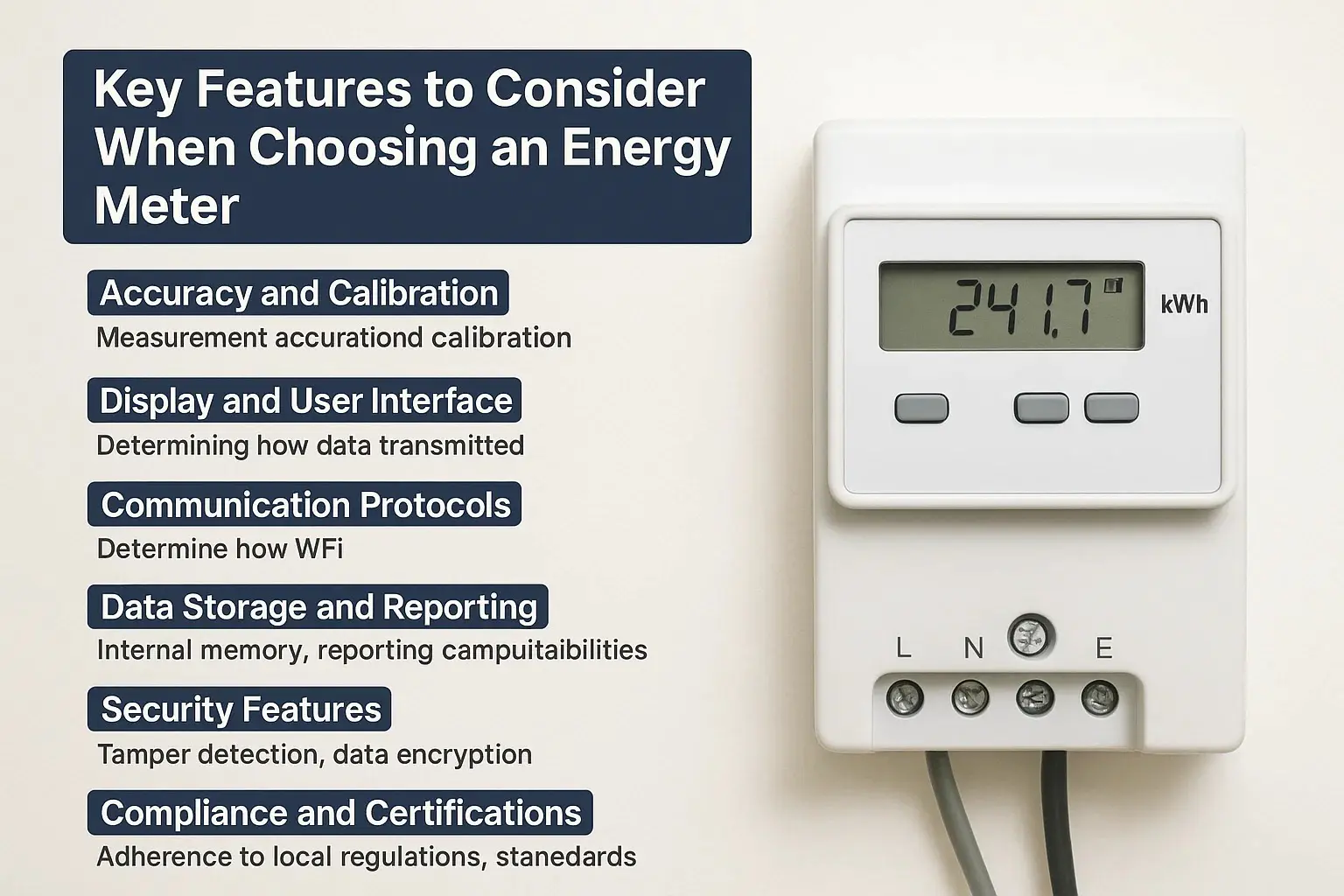
VI. Applications of Energy Meters
Energy meters are fundamental to the operation of modern electrical grids and play a crucial role across various sectors. Their applications extend far beyond simply measuring your home's electricity consumption.
6.1 Residential Use
The most common application of energy meters is in residential settings. Every home connected to the electrical grid has at least one primary energy meter.
- Billing and Consumption Tracking: The primary purpose is to accurately measure the total electricity consumed by a household over a billing period (typically monthly). This data forms the basis of your electricity bill.
- Energy Monitoring and Management: With the rise of smart meters, homeowners can now access detailed, real-time data about their energy usage. This empowers them to:
- Identify energy-hungry appliances.
- Understand peak consumption times.
- Adjust habits to reduce electricity bills.
- Participate in demand-response programs offered by utilities.
- Support for Smart Home Systems: Smart meters can integrate with home energy management systems, allowing automated control of appliances or climate control based on energy prices or consumption targets.
6.2 Commercial and Industrial Use
In commercial buildings and industrial facilities, energy meters take on a more complex and critical role due to higher consumption, diverse loads, and the need for detailed cost allocation and operational efficiency.
- Billing for Large Consumers: Similar to residential use, but on a much larger scale, meters accurately measure the substantial energy consumption of businesses, factories, and offices. These meters often handle higher voltages and currents and may measure additional parameters like reactive power.
- Demand Management: Commercial and industrial customers often face demand charges (fees based on their highest power usage during a billing period). Advanced meters help monitor and manage peak demand to avoid costly penalties.
- Process Optimization: In manufacturing, energy meters can be installed on specific production lines or heavy machinery to monitor their individual energy consumption. This data helps identify inefficiencies, optimize production schedules, and reduce operational costs.
- Cost Allocation: For multi-tenant buildings or industrial parks, separate metering (submetering) for each tenant or department ensures fair and accurate billing based on individual usage.
6.3 Submetering Applications
Submetering involves installing additional energy meters downstream from the main utility meter to measure consumption within specific units, departments, or individual loads. It's like having mini-meters within a larger property.
- Multi-tenant Buildings: In apartment complexes, shopping malls, or office buildings, submeters allow landlords to accurately bill individual tenants for their actual electricity usage rather than relying on estimated or flat-rate charges.
- Departmental Cost Tracking: Large organizations can use submeters to track energy consumption by different departments or cost centers, promoting accountability and encouraging energy-saving initiatives within each unit.
- Identifying Energy Hogs: By metering individual appliances, circuits, or equipment (e.g., HVAC systems, server rooms, refrigeration units), submetering helps pinpoint exactly where significant energy is being consumed, facilitating targeted efficiency improvements.
- Energy Audits: Submetering provides granular data essential for conducting comprehensive energy audits, helping engineers and facility managers identify areas for significant savings.
6.4 Net Metering and Renewable Energy
Energy meters are indispensable for integrating renewable energy sources, particularly in the context of net metering.
- Net Metering: This is a billing mechanism that credits solar or wind energy system owners for the electricity they add to the grid. A special bi-directional meter (often a smart meter) is required for net metering.
- It measures the electricity drawn from the grid when the renewable system isn't producing enough (e.g., at night for solar).
- It also measures the excess electricity generated by the system and fed back into the grid.
- The consumer is then billed for the "net" difference between electricity consumed and electricity generated.
- Monitoring Renewable System Performance: Meters help homeowners and businesses track the output of their solar panels or wind turbines, ensuring their systems are performing optimally.
- Grid Integration and Stability: For utilities, smart meters in areas with high renewable penetration are crucial for managing the two-way flow of electricity, balancing the grid, and ensuring stability as more intermittent energy sources come online.
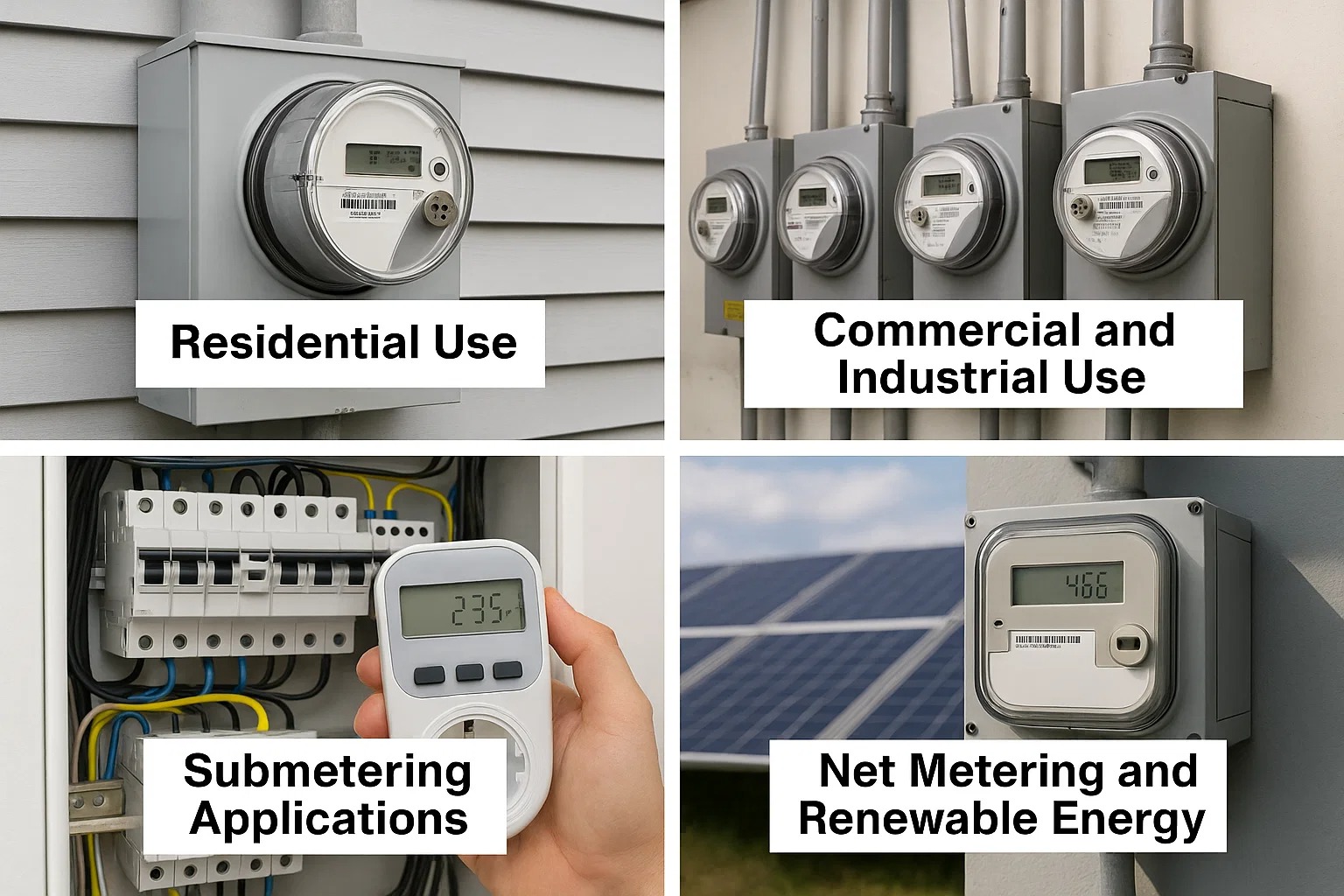
VII. Installation and Maintenance
Proper installation and regular maintenance are crucial for ensuring the accurate operation, longevity, and safety of any energy meter. While specific procedures might vary based on the meter type and local regulations, understanding the general guidelines is essential.
7.1 Safety Precautions
Working with electricity, especially at the point of entry to a building, carries significant risks. Safety must always be the top priority during any installation, maintenance, or troubleshooting of energy meters.
- De-energize the Circuit: Before beginning any work, always ensure the main power supply to the meter and the premises is completely shut off and locked out. Never assume the power is off; verify it with a voltage tester.
- Qualified Personnel Only: Meter installation and significant maintenance should only be performed by licensed electricians or certified technicians. They have the necessary training, tools, and understanding of electrical codes to perform the work safely.
- Personal Protective Equipment (PPE): Always wear appropriate PPE, including insulated gloves, safety glasses, and non-conductive footwear, to protect against electrical shock and other hazards.
- Follow Local Codes: Adhere strictly to all national and local electrical codes, regulations, and utility-specific requirements. These guidelines are in place to ensure safety and proper functionality.
- Check for Damage: Before touching any part of the meter or wiring, visually inspect for any signs of damage, corrosion, or exposed wires. If found, do not proceed and notify the utility company or a qualified professional immediately.
- Proper Tools: Use only insulated tools designed for electrical work.
7.2 Step-by-Step Installation Guide
While this is a general guide, always refer to the manufacturer's specific instructions and local electrical codes for precise installation procedures.
- Preparation:
- Confirm the power is off and locked out.
- Gather all necessary tools (screwdrivers, wire strippers, voltage tester, multimeter, etc.) and the correct meter type for the application.
- Ensure the meter mounting surface is secure and weather-protected if outdoors.
- Mounting the Meter Socket/Base:
- Install the meter socket or base securely to the wall or panel according to code requirements and manufacturer instructions. This typically involves securing it with screws or bolts.
- Wiring the Incoming Power:
- Carefully connect the incoming utility service wires (line side) to the designated terminals in the meter socket. Ensure correct phase rotation if applicable.
- Double-check all connections for tightness to prevent loose contacts and arcing.
- Wiring the Outgoing Load:
- Connect the wires leading to the consumer's electrical panel (load side) to the appropriate terminals in the meter socket.
- Again, ensure secure and correct connections.
- Grounding:
- Ensure the meter base and associated electrical system are properly grounded according to electrical codes. This is vital for safety.
- Installing the Meter:
- Once all wiring to the socket is complete and checked, carefully insert the energy meter into the meter socket. Ensure it seats firmly and correctly into the terminal jaws.
- For smart meters, this might also involve initial power-up and establishing communication with the utility's network.
- Final Checks and Sealing:
- Perform a final visual inspection of all connections and ensure no tools or debris are left behind.
- Once confirmed safe, the utility company or authorized personnel will usually apply a tamper seal to the meter and its base.
- Re-energize:
- Only after all checks are complete and verified, the main power supply can be safely re-energized.
- Verify the meter powers on and begins registering consumption.
7.3 Troubleshooting Common Issues
Even with proper installation, meters can encounter issues. Here's a look at common problems and general troubleshooting approaches (for advanced issues, always contact a professional):
| Issue | Possible Cause(s) | General Troubleshooting / Solution |
|---|---|---|
| Meter not displaying / No power | Main breaker tripped, loose connection, meter fault, utility outage | Check main breaker. Verify utility power supply to premises. If basic checks fail, contact utility/electrician. |
| Meter display frozen / Blank | Internal electronic fault, power surge damage | Try cycling power (if safe and accessible, only by qualified personnel). If still blank, meter likely needs replacement by utility. |
| Inaccurate readings (e.g., unusually high/low bill) | Faulty meter, wiring issue, undetected energy theft, new appliance usage | Compare usage with previous periods. Check for new high-power appliances. Report suspicion of meter fault or theft to utility. Only utility can verify meter accuracy. |
| Smart meter not communicating | Network outage, signal interference, meter communication module fault | Check if other smart devices are affected. Contact utility; they can often remotely diagnose communication issues or send a technician. |
| Flickering display / Error codes | Power fluctuations, internal fault, impending failure | Note down any error codes. Contact utility with the specific code. Avoid self-repair of internal meter components. |
| Audible humming/buzzing (Electromechanical) | Normal operation (slight hum), loose internal parts, overload | A slight hum is normal. Loud or unusual buzzing could indicate a loose component or overload. Contact utility for inspection. |
7.4 Regular Maintenance Tips
Energy meters are designed for durability, but some basic maintenance can ensure their continued optimal performance.
- Visual Inspection: Periodically (e.g., annually) check the meter's exterior for signs of physical damage, cracks, corrosion, insect nests, or loose wiring. Ensure seals are intact.
- Clear the Area: Keep the area around the meter clear of vegetation, debris, and obstructions to allow for proper ventilation, prevent overheating, and ensure accessibility for readings or maintenance.
- Cleanliness: Gently wipe down the meter's exterior to remove dust and dirt. Avoid using abrasive cleaners or excessive water.
- Professional Calibration Checks: While homeowners typically don't calibrate their own meters, utilities regularly check and recalibrate their meters in the field or in labs. If you suspect your meter is inaccurate, contact your utility to request a check.
- Firmware Updates (Smart Meters): For smart meters, utilities often push firmware updates remotely. Ensure your meter has a stable connection to receive these updates, which can improve performance and security.
- Report Anomalies: If you notice any unusual sounds, smells, flickering displays, or suspect tampering, report it to your utility company immediately.
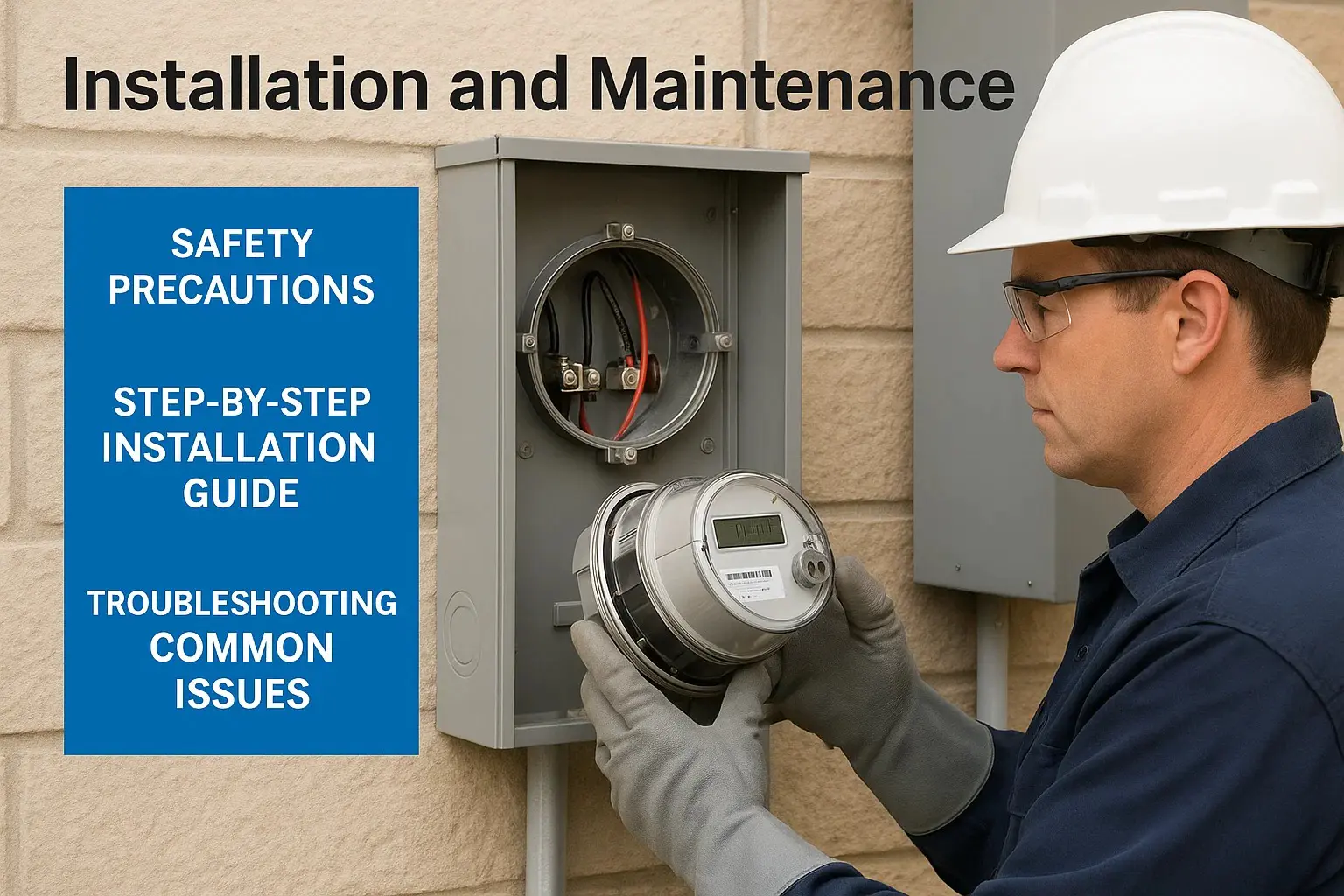
VIII. Energy Meter Standards and Regulations
To ensure accuracy, safety, and interoperability across the vast electrical grid, energy meters are subject to rigorous national and international standards and regulations. These guidelines protect both consumers and utility providers by setting benchmarks for performance and quality.
8.1 ANSI Standards
The American National Standards Institute (ANSI) plays a pivotal role in establishing standards for energy meters primarily within North America. ANSI standards define the electrical, mechanical, and performance requirements for electricity metering equipment.
- Focus: ANSI standards are heavily focused on the design, construction, testing, and performance of watt-hour meters. They cover various meter types, including electromechanical and electronic meters, as well as specific components.
- Key Standards:
- ANSI C12.1: This is arguably the most fundamental ANSI standard for electricity meters, covering the "Code for Electricity Metering." It defines acceptable limits for accuracy, test methods, and general meter requirements for both single-phase and poly-phase meters.
- ANSI C12.10: Specifies physical aspects like meter sockets and enclosures.
- ANSI C12.18, C12.19, C12.21, C12.22: These standards address communication protocols and data formats for meter reading and advanced metering infrastructure (AMI). For example, ANSI C12.22 is crucial for defining how smart meters communicate with utility systems over various networks.
- Purpose: Adherence to ANSI standards ensures that meters manufactured by different companies can operate reliably and consistently within the North American electrical grid, providing accurate billing and safe operation.
8.2 IEC Standards
The International Electrotechnical Commission (IEC) develops and publishes international standards for all electrical, electronic, and related technologies. IEC standards for energy meters are widely adopted globally, particularly in Europe, Asia, and many other parts of the world.
- Focus: IEC standards provide a comprehensive framework for electricity metering equipment, covering aspects from design and testing to environmental conditions and communication interfaces. They are often more focused on advanced functionalities, including those found in smart meters.
- Key Standards:
- IEC 62052 Series: Covers general requirements, tests, and test conditions for electricity metering equipment (AC). This series outlines the fundamental characteristics meters must possess.
- IEC 62053 Series: Specifies particular requirements for static (electronic) meters for active energy (e.g., IEC 62053-21 for Class 1 and 2 static meters, IEC 62053-22 for Class 0.2S and 0.5S static AC active energy meters). These standards define accuracy classes and measurement methods.
- IEC 62056 Series: This is a crucial set of standards for data exchange for meter reading, tariff, and load control. It defines common communication protocols (e.g., DLMS/COSEM) that allow interoperability between meters and reading systems from different manufacturers. This is vital for smart meter deployments.
- Purpose: IEC standards facilitate international trade by providing a common language and set of requirements for meter manufacturers and utilities worldwide, promoting innovation and ensuring compatibility across diverse energy markets.
8.3 Local Regulations and Requirements
Beyond international and national standards, local regulations and utility-specific requirements often dictate additional criteria for energy meters. These can vary significantly by country, region, or even individual utility company.
- National Certifications: Many countries have their own national metrology institutes or regulatory bodies that require specific certifications or approvals for meters to be legally used for billing purposes. For example, in Europe, meters often need to comply with the Measuring Instruments Directive (MID) to be legally marketable.
- Utility Specifications: Individual utility companies might have their own detailed specifications for meters they procure. These can include:
- Specific communication technologies they support (e.g., preferred cellular providers, radio frequencies).
- Particular security features or encryption protocols.
- Physical dimensions or mounting requirements to fit existing infrastructure.
- Special functionalities needed for demand response programs or renewable energy integration.
- Installation Codes: Local electrical codes specify how meters must be installed, including wiring methods, grounding requirements, and enclosure standards to ensure safety.
- Privacy and Data Protection Laws: With smart meters collecting granular data, local regulations often govern how this data can be collected, stored, and used, ensuring consumer privacy is protected. Examples include GDPR in Europe or specific state laws in the US.
It is crucial for manufacturers, utilities, and installers to be fully aware of and comply with all applicable standards and regulations to ensure meters are accurate, safe, legally compliant, and compatible with the existing energy infrastructure.
| Standard Body | Primary Region/Scope | Key Focus Areas | Examples of Key Standards (Illustrative) |
|---|---|---|---|
| ANSI | North America | Design, construction, testing, and performance of electricity meters (especially kWh). Communication protocols. | C12.1 (Code for Electricity Metering), C12.22 (Communication Protocol) |
| IEC | Global | Comprehensive requirements for electrical metering equipment, including advanced functionalities and communication interfaces. | 62052 Series (General Requirements), 62053 Series (Specific Meter Types), 62056 Series (Data Exchange, e.g., DLMS/COSEM) |
| Local/National Regulations | Specific Country/Region/Utility | Legal requirements for billing, national certifications (e.g., MID), utility-specific technical specs, privacy laws, installation codes. | Measuring Instruments Directive (MID) in EU, specific utility procurement guidelines, national electrical codes. |
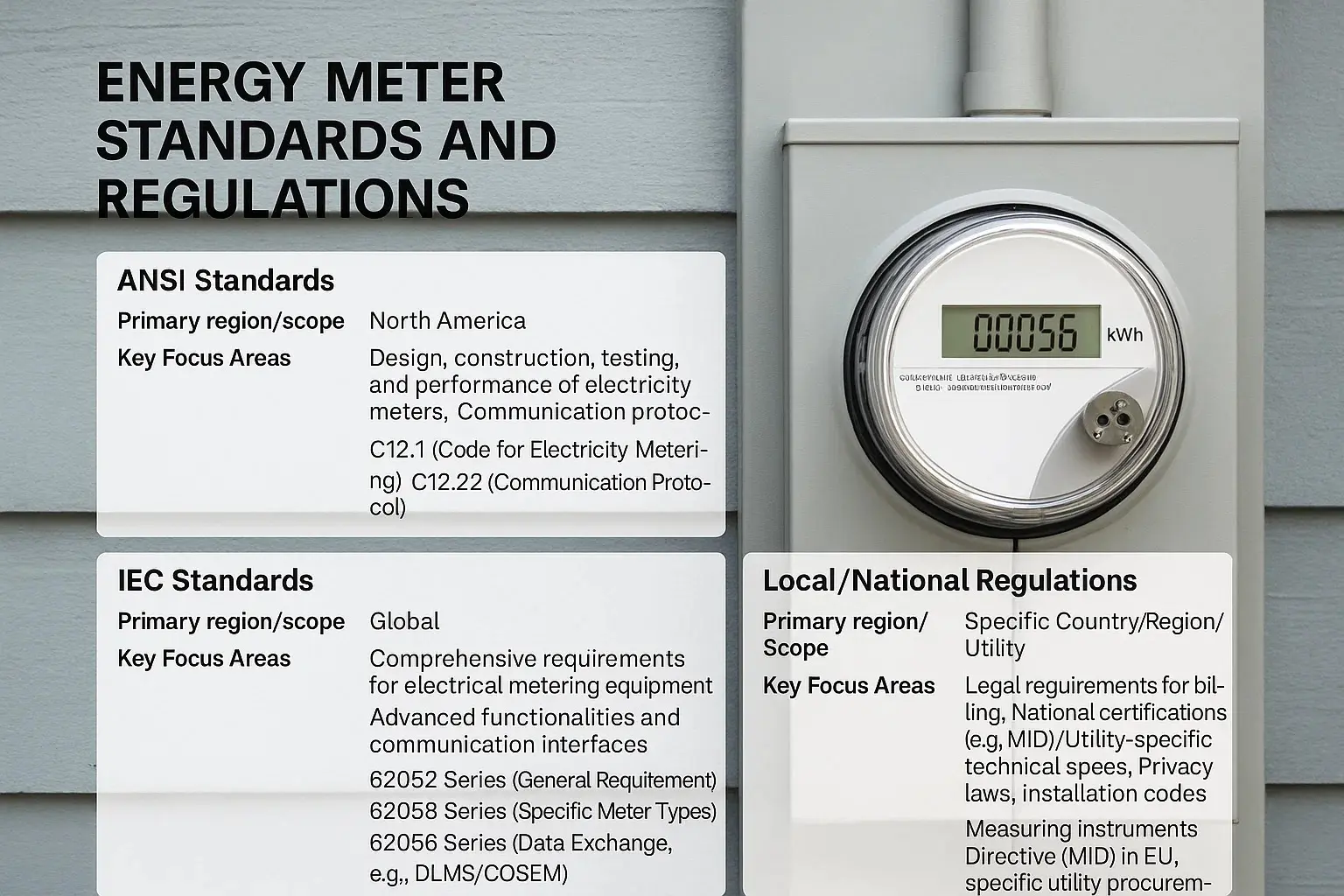
IX. Future Trends in Energy Metering
The landscape of energy metering is continuously evolving, driven by technological advancements, the imperative for greater energy efficiency, and the increasing complexity of the smart grid. The future of energy meters promises even more sophisticated capabilities and deeper integration into our digital lives.
9.1 Integration with IoT Devices
The Internet of Things (IoT) is rapidly expanding, connecting everyday objects to the internet. Energy meters are poised to become a central hub within this ecosystem, allowing for unprecedented levels of monitoring and control.
- Enhanced Home Energy Management: Smart meters will increasingly communicate seamlessly with other IoT devices in your home, such as smart thermostats, smart appliances (dishwashers, washing machines), and electric vehicle (EV) chargers. This allows for automated optimization of energy consumption. For example, your smart meter could tell your EV to charge when electricity prices are lowest, or your dishwasher to run when solar generation is at its peak.
- Real-Time Appliance-Level Monitoring: Future meters, or integrated home energy monitoring systems, could provide insights not just into total household consumption, but into the energy usage of individual appliances without needing separate plug-in monitors. This granularity would help consumers pinpoint energy "vampires" and inefficient devices.
- Proactive Maintenance and Fault Detection: By continuously monitoring electrical loads and patterns, IoT-enabled meters could help predict appliance failures or identify wiring issues before they become major problems, potentially alerting both the homeowner and relevant service providers.
- Integration with Building Management Systems (BMS): In commercial and industrial settings, smart meters will deepen their integration with BMS platforms, providing real-time energy data that can be used to optimize HVAC, lighting, and industrial processes automatically based on energy costs, demand, and occupancy.
9.2 Advanced Data Analytics and AI
The immense volume of data generated by smart meters (often called "big data") is a goldmine for advanced data analytics and Artificial Intelligence (AI). These technologies will transform how utilities manage the grid and how consumers interact with their energy usage.
- Predictive Analytics for Grid Management: AI algorithms can analyze historical and real-time meter data, weather forecasts, and other variables to predict energy demand with remarkable accuracy. This allows utilities to optimize power generation, prevent blackouts, and manage grid resources more efficiently.
- Personalized Energy Advice: AI can process individual consumption patterns and provide tailored recommendations to consumers on how to save energy, suggesting specific actions based on their unique habits and appliance usage.
- Fraud Detection: AI and machine learning models are becoming increasingly sophisticated at identifying unusual consumption patterns that might indicate energy theft, improving detection rates and reducing losses for utilities.
- Optimized Renewable Energy Integration: AI helps manage the fluctuating output of renewable energy sources (like solar and wind) by predicting their generation and optimizing grid operations to balance supply and demand, making the grid more resilient to intermittent power.
- Automated Demand Response: AI can enable more intelligent and automated demand response programs, where the grid can subtly adjust energy consumption in participating homes and businesses during peak times, minimizing disruption while maximizing grid stability.
9.3 Cybersecurity Enhancements
As energy meters become more connected and intelligent, the importance of cybersecurity escalates. Protecting the integrity and privacy of energy data, as well as the stability of the grid, is paramount.
- Robust Encryption and Authentication: Future meters will feature even stronger encryption protocols for data transmission and more sophisticated multi-factor authentication methods to prevent unauthorized access or data breaches.
- Blockchain Technology: There's growing interest in using blockchain for secure data management and transactions within the energy sector. This could offer enhanced transparency and immutability for meter readings and peer-to-peer energy trading.
- Threat Detection and Incident Response: Advanced security systems will be integrated with meters to continuously monitor for cyber threats, detect anomalies, and enable rapid response to potential attacks, protecting both consumer data and critical infrastructure.
- Secure Firmware Updates: Over-the-air (OTA) firmware updates for smart meters will incorporate stricter validation and cryptographic signatures to ensure that only legitimate, untampered software can be installed.
- Privacy-Enhancing Technologies: As more granular data is collected, future meters and associated systems will incorporate advanced privacy-preserving techniques to anonymize or aggregate data where appropriate, protecting individual consumer privacy while still enabling valuable analytics.
| Trend Area | Key Developments | Impact on Energy Metering |
|---|---|---|
| IoT Integration | Communication with smart home devices, EV chargers, BMS. Appliance-level monitoring. | Meters become central hubs for automated home/building energy management and deeper insights. |
| Advanced Data Analytics & AI | Predictive demand forecasting, personalized energy advice, enhanced fraud detection, optimized renewable integration. | Smarter grid operations, more efficient energy use, and tailored consumer experiences. |
| Cybersecurity Enhancements | Stronger encryption, blockchain potential, advanced threat detection, secure firmware updates, privacy-enhancing technologies. | Increased protection of data and grid infrastructure, building trust in connected energy systems. |
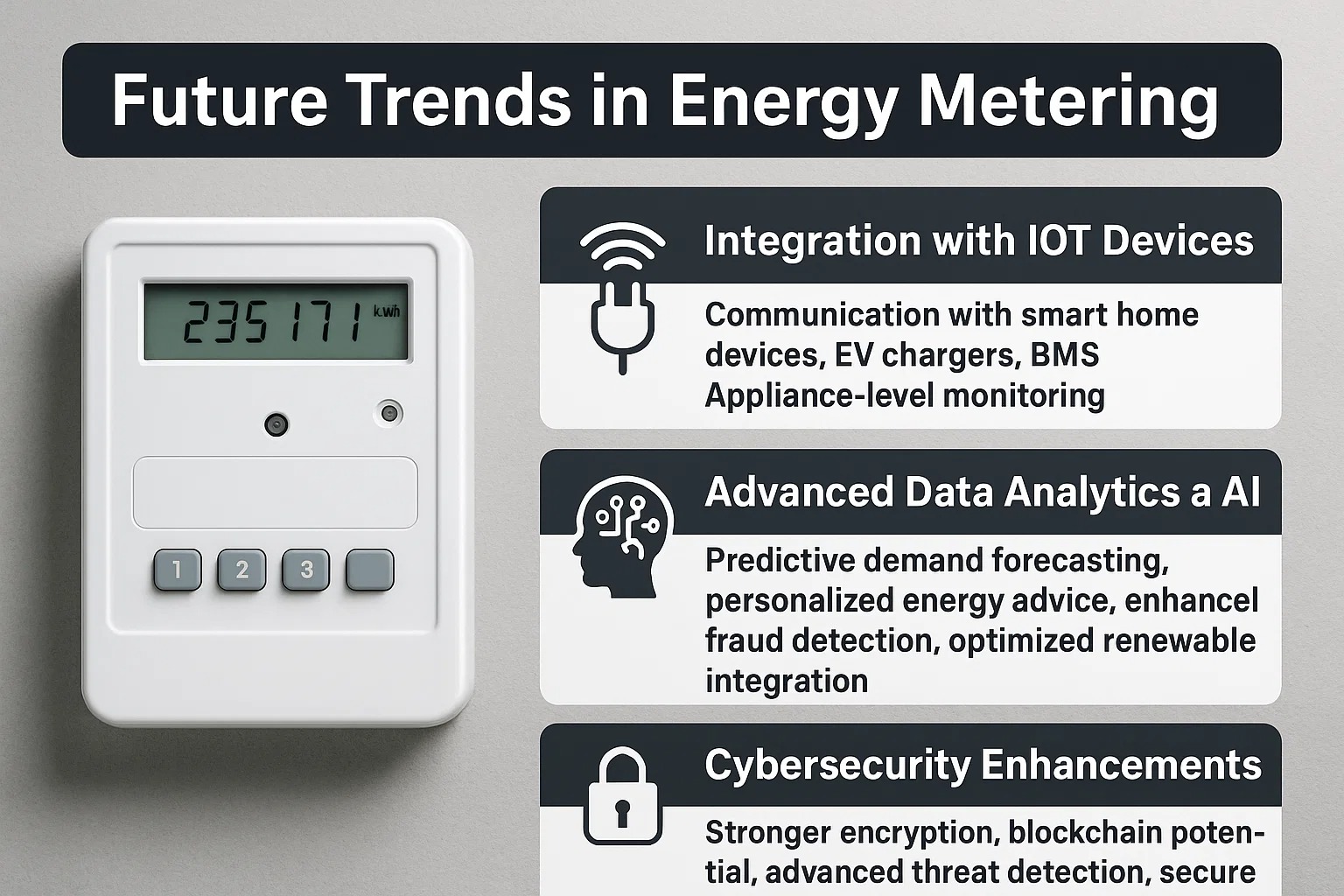
Conclusion
The journey through the world of energy meters, from their humble mechanical beginnings to the sophisticated smart devices of today, underscores their indispensable role in modern society. They are far more than just billing instruments; they are crucial tools for managing our planet's most vital resource.
Recap of Key Points
We've explored the fundamental types of energy meters: the traditional electromechanical induction meters with their spinning discs, the more accurate and robust electronic energy meters with digital displays, and the transformative smart meters, which boast two-way communication and real-time data capabilities.
We delved into how these meters work, from the basic principles of measuring voltage and current to calculating kilowatt-hours (kWh), the standard unit of energy consumption. The advent of smart meters has ushered in an era of real-time monitoring, remote reading, and seamless integration with smart grids, offering unprecedented levels of insight and control.
Choosing the right meter involves considering critical features like accuracy, user interface, communication protocols, data storage, robust security features, and compliance with international and local standards such as ANSI and IEC. Finally, we looked at the diverse applications of meters across residential, commercial, and industrial sectors, including their vital role in submetering and net metering for renewable energy. Looking ahead, the future promises even deeper integration with IoT devices, advanced AI-driven analytics, and heightened cybersecurity measures, all contributing to a more intelligent and sustainable energy ecosystem.
The Importance of Choosing the Right Energy Meter
Selecting the appropriate energy meter is not merely a technical decision; it's a strategic one with significant implications for cost efficiency, operational effectiveness, and environmental impact. For homeowners, it means gaining control over energy bills and making informed choices. For businesses and industries, it translates into optimized processes, reduced operational costs, and better resource allocation. For utilities, it ensures grid stability, reduces waste, and enables the seamless integration of new technologies and renewable sources. The right meter is foundational to understanding, managing, and ultimately reducing energy consumption.
Final Thoughts on Energy Efficiency
In an era defined by climate change and the need for sustainable practices, energy efficiency has never been more critical. Energy meters, particularly smart meters, are powerful enablers in this pursuit. By providing granular data and fostering greater awareness, they empower individuals and organizations to become active participants in the energy transition. They highlight where energy is being consumed, encouraging conservation, and facilitating smarter energy choices.
Ultimately, the humble energy meter stands as a symbol of our evolving relationship with power—moving from passive consumption to active management. Embracing the capabilities of modern energy meters is a fundamental step towards a more sustainable, resilient, and energy-conscious future for everyone.

 English
English 简体中文
简体中文
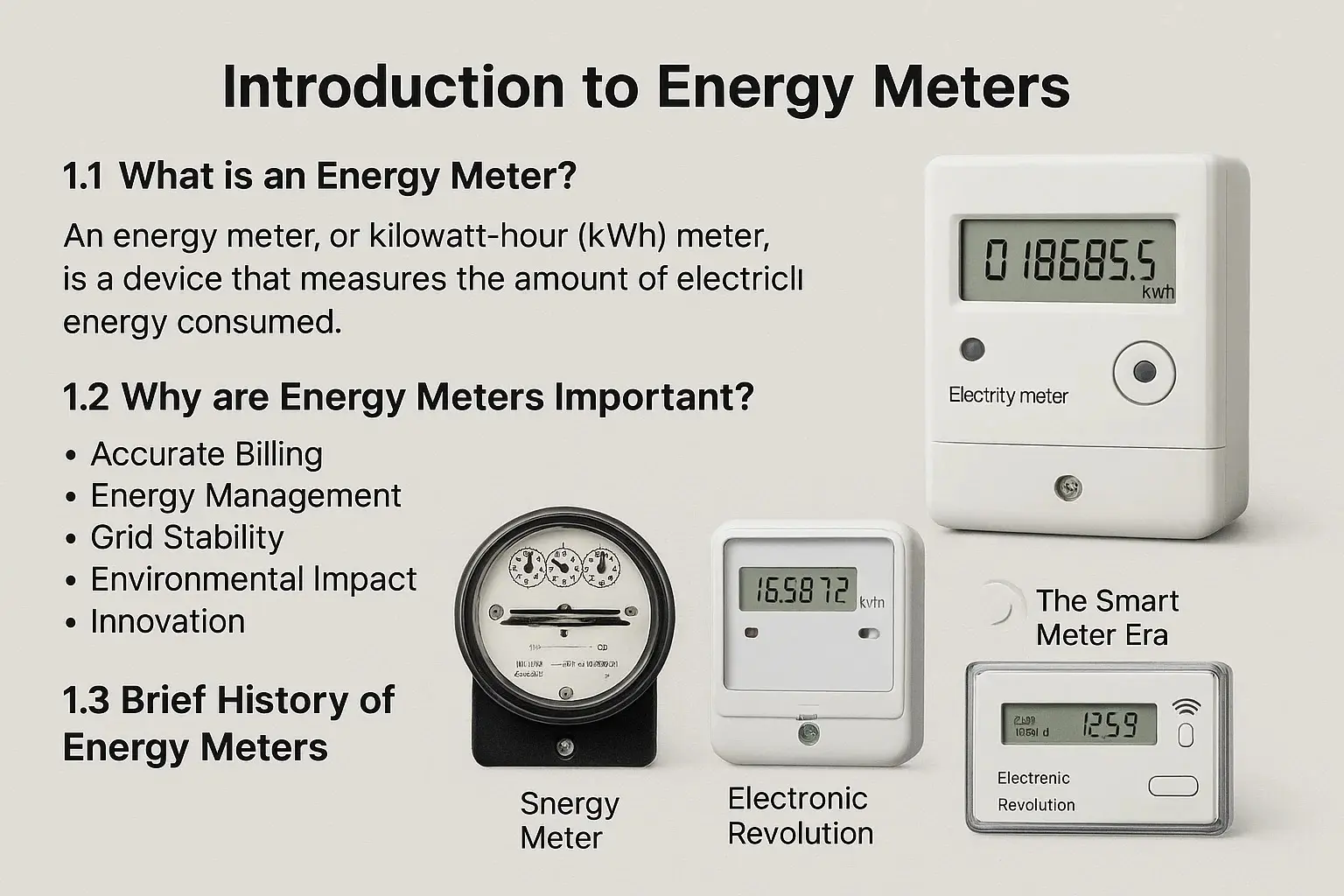
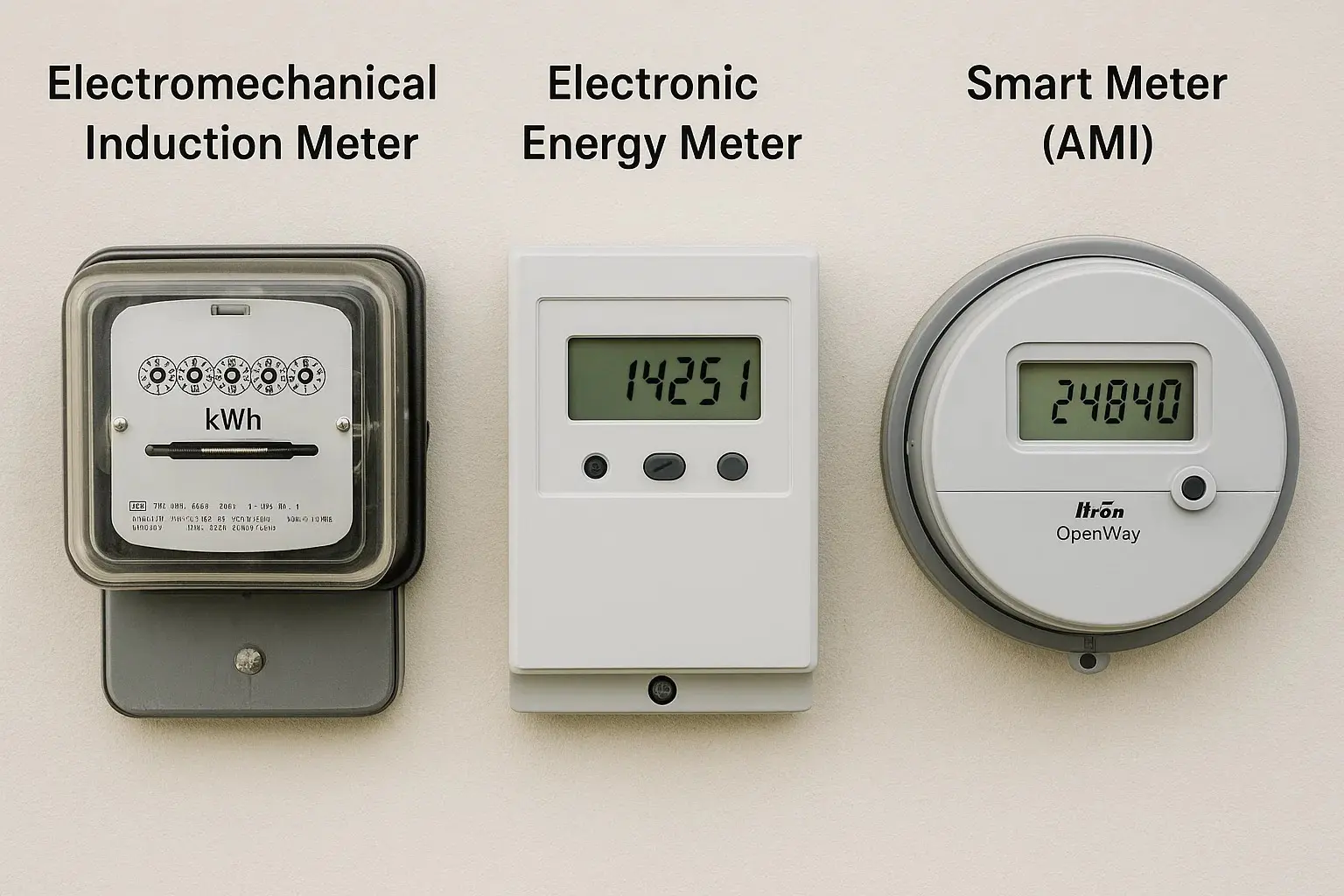
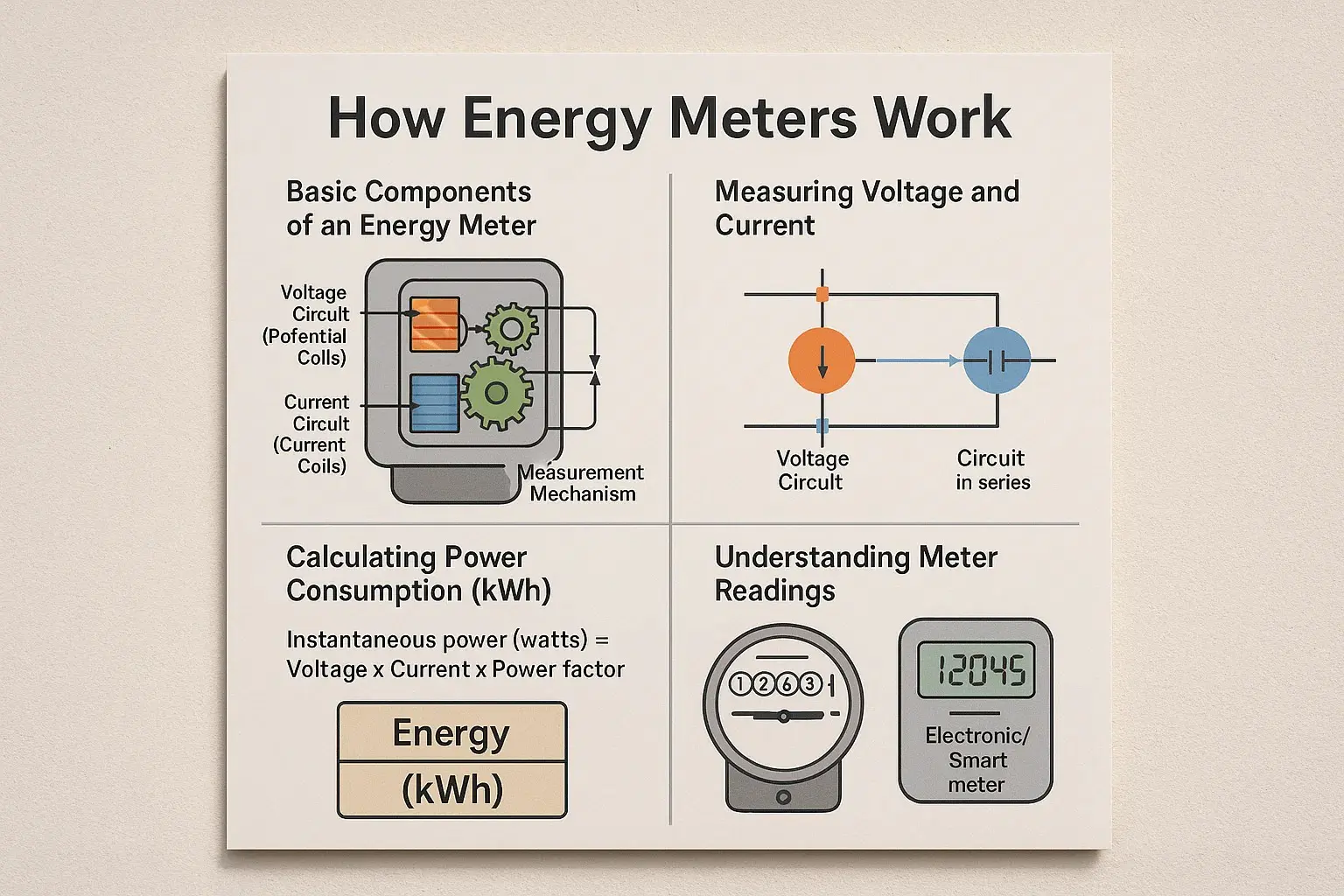
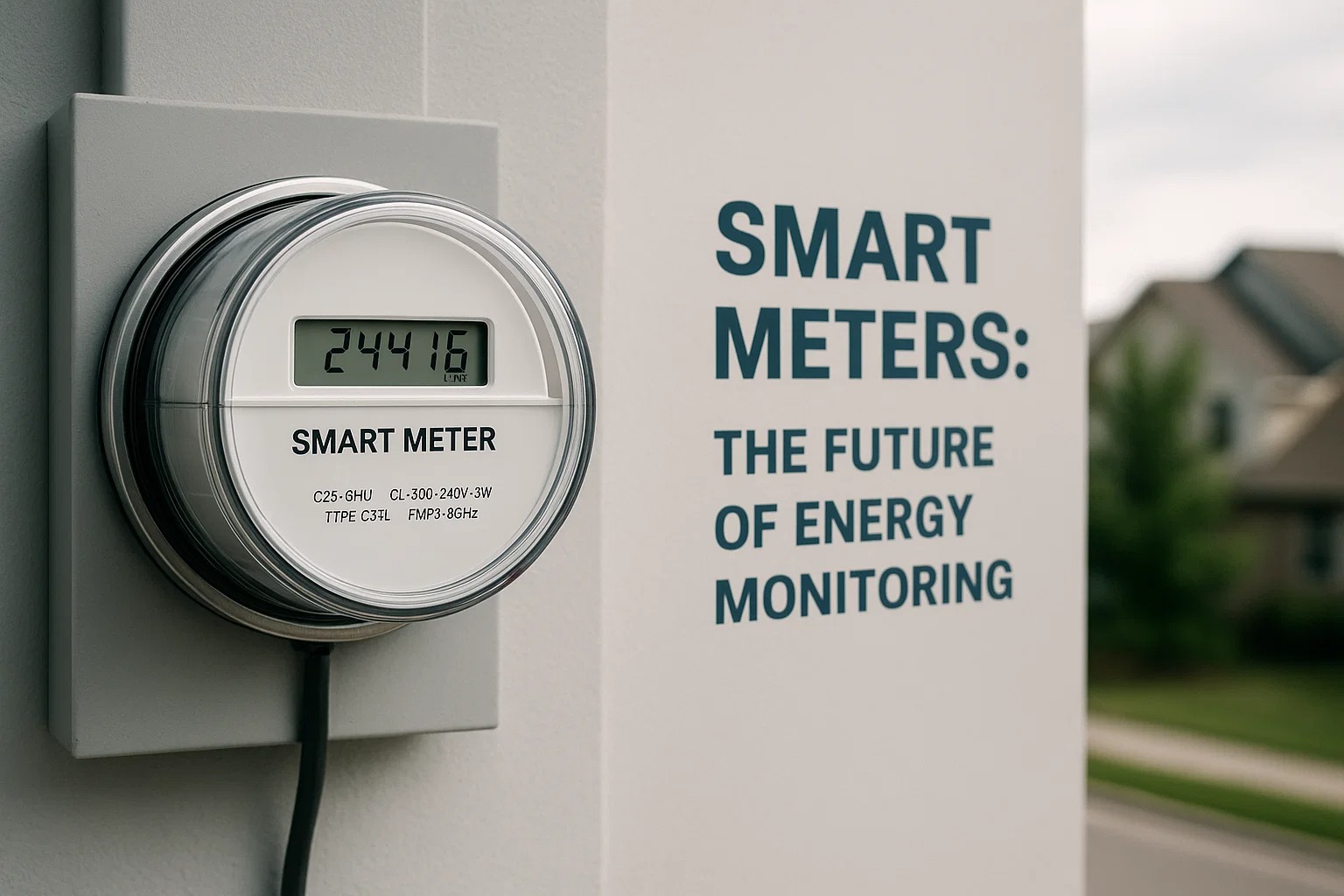




.png?imageView2/2/w/500/h/500/format/png/q/100)




.png?imageView2/2/w/500/h/500/format/png/q/100)

